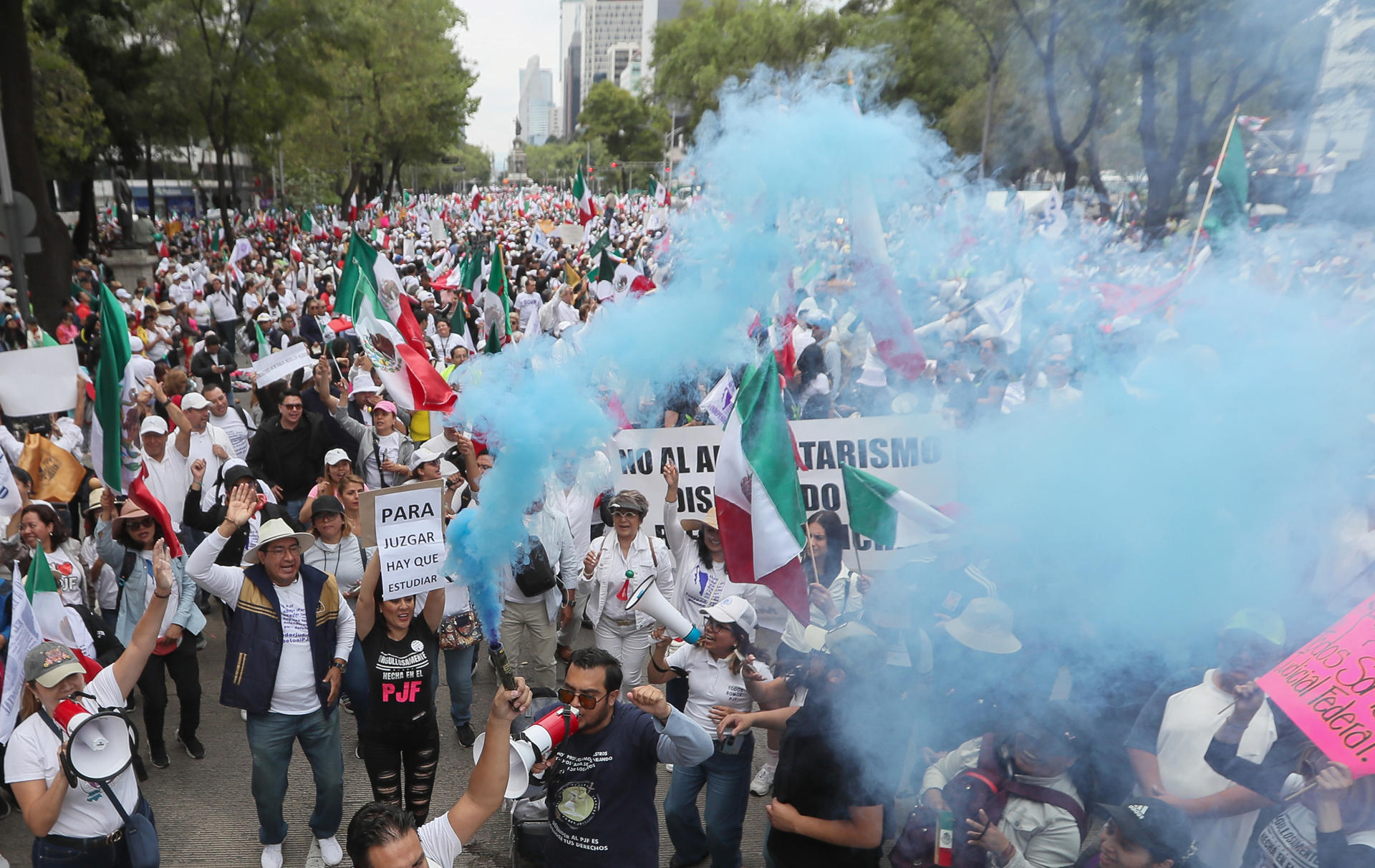Finanzas Domésticas is a Spanish-language platform focused on providing practical advice on personal finance, saving…

In recent years, the Mexican workforce has been at the heart of an ongoing movement advocating for better working conditions, fair wages, and more robust labor rights. These protests, which have gained momentum across various industries, underscore the growing dissatisfaction of Mexican workers with their treatment, working conditions, and the social and economic inequalities they face. As the world continues to change and evolve, so do the demands of workers in Mexico, and their protests reflect the need for a more just and equitable system. https://finanzasdomesticas.com/trabajadores-mexicanos-protestan
This article explores the root causes of the protests by Mexican workers, the significance of their actions, and the implications these protests have for labor rights and the broader Mexican society. From the rise of social movements to the fight for fair pay and workplace protections, we will delve into the key aspects of this growing trend.
Table of Contents
Toggle1. The Rise of Worker Protests in Mexico
Over the past several decades, Mexico has seen a significant shift in its labor landscape. While the country has long been known for its low-cost labor market, characterized by maquiladoras (assembly plants) and its proximity to the United States, many workers have found themselves increasingly disenfranchised. The pressure of rising living costs, stagnant wages, and limited labor rights has created the perfect storm for protest movements.
One of the most notable drivers of these protests is the demand for better pay and benefits. While wages in Mexico remain some of the lowest in the developed world, many workers find themselves working long hours under difficult conditions with little reward. In particular, employees in manufacturing, agriculture, and service sectors have voiced their frustration with their lack of bargaining power.
The push for change has led to large-scale protests and strikes, drawing attention to the exploitation of workers and calling for reforms that will improve labor conditions. The protests range from demands for higher wages to calls for improved job security and better health and safety standards in the workplace.
2. Root Causes of the Protests
There are several key factors contributing to the ongoing protests by Mexican workers. These include economic inequality, poor working conditions, insufficient labor protections, and the lack of union representation. Let’s examine these issues in greater detail:
A. Economic Inequality
Mexico has one of the highest levels of income inequality among OECD countries. Despite being one of the largest economies in Latin America, a significant portion of the population lives in poverty. A large portion of the workforce is employed in low-paying jobs, with few opportunities for advancement or upward mobility. This economic disparity has led to frustration among workers, as many struggle to make ends meet, even as the cost of living continues to rise.
B. Poor Working Conditions
In many sectors, especially in the maquiladora industry, workers are subjected to long hours, unsafe working environments, and low pay. There are reports of laborers being exposed to hazardous chemicals, working in extreme heat or cold, and facing physical abuse from supervisors. Many workers also experience high levels of stress due to unrealistic production targets or lack of breaks during long shifts.
C. Lack of Labor Protections
Labor rights in Mexico are often undermined by weak enforcement of labor laws. Although the country has laws protecting workers’ rights, they are not always followed, and violations are rarely penalized. Workers often find themselves unable to pursue legal action against their employers due to fear of retaliation or job loss.
In addition, unions in Mexico have historically been weak, often influenced by government or corporate interests, and unable to protect the rights of workers effectively. This lack of strong union representation has left many workers without a collective bargaining voice, making it more difficult to address issues like wage disparities or workplace hazards.
D. The COVID-19 Pandemic
The COVID-19 pandemic further exacerbated the economic hardships for many workers in Mexico. Many workers were laid off or forced to continue working in unsafe conditions during the height of the pandemic. Essential workers, in particular, were often placed at risk with insufficient protective equipment and inadequate health support. The pandemic has served as a catalyst for labor protests, with workers demanding better protections and benefits in light of the risks posed by the health crisis.
3. Key Protests and Movements
Several protests have become emblematic of the wider struggle for workers’ rights in Mexico. These protests have taken place across different sectors and regions, with workers from various industries coming together to demand better conditions.
A. Maquiladora Strikes
In Mexico’s northern border regions, maquiladora workers have long been a crucial part of the manufacturing industry. However, these workers often face some of the harshest conditions, with low pay, long hours, and minimal labor protections. Over the years, labor protests in maquiladoras have gained momentum, with workers calling for higher wages, better working conditions, and stronger protections against exploitation.
These protests have become increasingly organized, with many workers in the maquiladora industry taking to the streets or going on strike to demand better conditions. One of the most notable examples was the 2019 strike in Matamoros, Tamaulipas, where thousands of workers participated in a walkout over pay demands and working conditions. This strike set the stage for other labor movements in Mexico and became a symbol of resistance for workers across the country.
B. Teacher’s Unions
Teachers in Mexico have also played a prominent role in labor protests. Historically, Mexico’s teachers’ unions have been some of the most organized and influential unions in the country. However, teachers have long complained about the underfunding of education, inadequate salaries, and poor working conditions.
In recent years, teacher protests have become increasingly widespread, particularly in response to education reforms that many teachers viewed as harmful. Teachers have staged strikes and protests across the country, calling for better pay, more resources for schools, and a fairer education system.
C. Agricultural Workers
Agricultural workers, particularly those in rural Mexico, are also protesting for better conditions. The country’s agricultural sector employs a significant number of people, many of whom work in unsafe conditions and receive low wages. Workers in rural areas often face exploitation from landowners or large agribusinesses, with limited access to basic services like healthcare or fair wages.
Protests in the agricultural sector are typically centered around better pay, access to social services, and an end to exploitative working conditions. These protests are especially important in a country like Mexico, where agriculture plays a major role in the economy.
4. Government and Corporate Response
The response to these protests has been mixed. On one hand, the Mexican government has made efforts to address workers’ concerns, especially with the recent labor law reforms aimed at strengthening unions and improving labor rights. These reforms, which were implemented in 2019, are intended to make it easier for workers to form independent unions, improve wages, and ensure that labor laws are more effectively enforced.
However, many workers believe that these reforms have not been fully implemented, and some argue that the government continues to prioritize business interests over labor rights. In many cases, corporate entities have been slow to respond to workers’ demands, preferring to maintain the status quo rather than address systemic issues.
5. Looking Ahead: What’s Next for Mexican Workers?
The protests and movements we are seeing today may be just the beginning of a larger labor shift in Mexico. As workers continue to demand better wages, safer conditions, and stronger protections, it is clear that the fight for labor rights is far from over. The key to future success will lie in strengthening unions, enforcing labor laws, and ensuring that workers’ voices are heard.
Ultimately, the Mexican workforce is calling for dignity, fairness, and respect. The protests of today represent a broader movement towards a more just society where workers are treated with the respect they deserve. If these efforts continue to gain momentum, we may see a fundamental shift in the labor landscape in Mexico, one that benefits not only workers but the entire economy.
Conclusion
The protests by Mexican workers are a clear indication of the growing demand for better wages, working conditions, and rights. These protests are about more than just dissatisfaction—they represent a call for justice and equality in the workforce. As Mexican workers continue to organize and voice their concerns, it is crucial that both the government and businesses listen to their demands and work towards creating a fairer, more equitable system. Only through collective action and systemic change can we hope to see a future where the rights of all workers are respected and upheld.
Related Posts
-
https://finanzasdomesticas.com/china-prohibe-las-criptomonedas
-
https://finanzasdomesticas.com/china-prohibe-las-criptomonedas/
1. Introduction Domestic finances, often referred to as personal or household finances, encompass the management…
-
https://finanzasdomesticas.com/el-pib-de-alemania/
Germany, as the largest economy in Europe and the fourth largest in the world, holds…
-
https://finanzasdomesticas.com/el-precio-del-bitcoin
Bitcoin, the first and most well-known cryptocurrency, has taken the financial world by storm since…
-
https://finanzasdomesticas.com/economia-de-india-afectada/
India, one of the fastest-growing economies in the world, has been facing a range of…
-
https://finanzasdomesticas.com/mexico-tendra-el-mercado-mas-grande-de-cannabis
In a groundbreaking move, Mexico is on track to become the largest cannabis market in…





